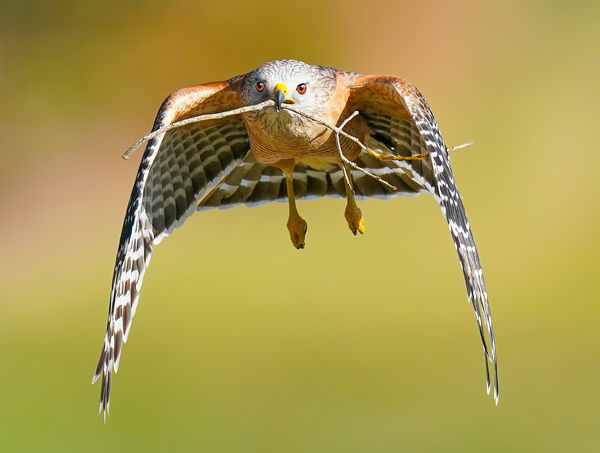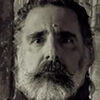What are all the advantages of fast lenses?
Jan 28, 2021 06:29:18 #
I've decided that seeking a wide aperture like f/1.4 (and even f/2.8), and so on, involves a fetish. Such apertures go with a specialty lens for a limited purpose. Most all photography takes place at smaller apertures.
If more light becomes needed, then turning to artificial lighting may provide the best result for the exposure.
If more light becomes needed, then turning to artificial lighting may provide the best result for the exposure.
cyclespeed wrote:
I know that lenses that open to F 1.8 and even bigger on some have an advantage when shooting in low light. Are there any other situations when this larger amount of light coming through would have an advantage.
I am about to try and use macro lens / settings to capture one of the fluffiest snow flakes we have seen in some time. So for example would a fast lens be better to use in this case?
Thank you for your thoughts.
I am about to try and use macro lens / settings to capture one of the fluffiest snow flakes we have seen in some time. So for example would a fast lens be better to use in this case?
Thank you for your thoughts.
Jan 28, 2021 06:31:10 #
CHG_CANON wrote:
If people envy your gear, that's worth something, isn't it?
As we all know, It's so very true.
Jan 28, 2021 06:46:56 #
billnikon
Loc: Pennsylvania/Ohio/Florida/Maui/Oregon/Vermont
cyclespeed wrote:
I know that lenses that open to F 1.8 and even bigger on some have an advantage when shooting in low light. Are there any other situations when this larger amount of light coming through would have an advantage.
I am about to try and use macro lens / settings to capture one of the fluffiest snow flakes we have seen in some time. So for example would a fast lens be better to use in this case?
Thank you for your thoughts.
I am about to try and use macro lens / settings to capture one of the fluffiest snow flakes we have seen in some time. So for example would a fast lens be better to use in this case?
Thank you for your thoughts.
You do not need a fast lens for a snow flake, in fact, it you want to use a macro lens to capture the snow flake, stopping down your lens to say f8, f11, or f16, you depth of field increases so that snow flake taken at f1.8 may be sharp in front, but not in back, at f16, you snow flake might be sharp all the way through, make sure to focus on the front as depth of field increases as the subject moves away from the camera.
Also, the big advantage of a FAST lens is that you can isolate your subject, it also becomes HARDER to control over all sharpness because of your limited because of a shallow depth of field.
You will have to be very aware of what is in focus when shooting wide open.
But, wide open can isolate your subject, below is an example taken with a 600mm wide open at f4, notice how the Red Shoulder Hawk seems to pop out of the smooth creamy background.
Again, focusing wide open even with a 1.8 lens can isolate your subject, but be mindful of what's in focus.
Good luck and keep on shooting until the end.

Jan 28, 2021 07:54:18 #
CHG_CANON wrote:
In today's world of digital cameras capable of del... (show quote)
You missed the bragging right!
Jan 28, 2021 08:54:12 #
Jan 28, 2021 09:42:38 #
RWR
Loc: La Mesa, CA
cyclespeed wrote:
I know that lenses that open to F 1.8 and even bigger on some have an advantage when shooting in low light. Are there any other situations when this larger amount of light coming through would have an advantage.
I am about to try and use macro lens / settings to capture one of the fluffiest snow flakes we have seen in some time. So for example would a fast lens be better to use in this case?
Thank you for your thoughts.
I am about to try and use macro lens / settings to capture one of the fluffiest snow flakes we have seen in some time. So for example would a fast lens be better to use in this case?
Thank you for your thoughts.
Rather than copying what others here recommend, I encourage you to think for yourself.
Jan 28, 2021 10:10:20 #
Basically, the faster the lens, the more light it is able to admit. However, along with more light comes larger size, more weight, higher price, and, possibly, a decrease in image quality.
Jan 28, 2021 10:13:08 #
anotherview wrote:
I've decided that seeking a wide aperture like f/1.4 (and even f/2.8), and so on, involves a fetish. Such apertures go with a specialty lens for a limited purpose. Most all photography takes place at smaller apertures.
If more light becomes needed, then turning to artificial lighting may provide the best result for the exposure.
If more light becomes needed, then turning to artificial lighting may provide the best result for the exposure.
I don’t agree that owning 1.4 and even 2.8 aperture lenses is a fetish.
Jan 28, 2021 10:14:34 #
cyclespeed wrote:
I know that lenses that open to F 1.8 and even bigger on some have an advantage when shooting in low light. Are there any other situations when this larger amount of light coming through would have an advantage.
I am about to try and use macro lens / settings to capture one of the fluffiest snow flakes we have seen in some time. So for example would a fast lens be better to use in this case?
Thank you for your thoughts.
I am about to try and use macro lens / settings to capture one of the fluffiest snow flakes we have seen in some time. So for example would a fast lens be better to use in this case?
Thank you for your thoughts.
Responding to the title of the post:
I would not expect any one person to come up with ALL the advantages of fast lenses. The responses have pointed out some of them, and many have limited their response to the text from the OP.
One more "advantage" is that faster lenses, since they have large elements, are heavier. That will reduce camera shake from mirror slap, shutter action, or essential tremor (to name only a few sources of lens disturbances).
Jan 28, 2021 10:56:24 #
Fast lens? Things I didn’t see in comments:
Usually will have better optics
Usually will let you spend a lot more money
Usually will add considerably more weight
Usually will look more impressive
Usually will have better optics
Usually will let you spend a lot more money
Usually will add considerably more weight
Usually will look more impressive
Jan 28, 2021 11:26:19 #
RWR wrote:
Rather than copying what others here recommend, I encourage you to think for yourself.
You’re recommending quitting the UHH ?
Jan 28, 2021 11:34:37 #
Kmgw9v wrote:
I don’t agree that owning 1.4 and even 2.8 aperture lenses is a fetish.
Do you mean in the real world, or online, or at your camera club, or ... ???
Jan 28, 2021 12:35:08 #
RWR
Loc: La Mesa, CA
User ID wrote:
You’re recommending quitting the UHH
Not really. This kind of nonsense keeps UHH going!
Jan 28, 2021 13:52:58 #
cyclespeed wrote:
I know that lenses that open to F 1.8 and even bigger on some have an advantage when shooting in low light. Are there any other situations when this larger amount of light coming through would have an advantage.
I am about to try and use macro lens / settings to capture one of the fluffiest snow flakes we have seen in some time. So for example would a fast lens be better to use in this case?
Thank you for your thoughts.
I am about to try and use macro lens / settings to capture one of the fluffiest snow flakes we have seen in some time. So for example would a fast lens be better to use in this case?
Thank you for your thoughts.
As others have noted, the main benefit of a fast lens is shallow depth of field, so you can get nice bokeh if you're shooting images where you want only a shallow field to be sharp, i.e., when you're photographing, say, a flower, and you only want a few petals to be sharp. And the main advantage of a fast lens used to be speed, especially important to journalists working in low-light situations.
Barring that, there are few advantages to a fast lens, especially since today's cameras can produce good images at high ISO's--in other words, in low-light situations, you no longer need a fast lens. Your camera can do the work. It used to be that journalists who used Tri-X at ASA 400 might "push" Tri-X to 800, or even higher. My Nikon D850 works well at ISO 1600--I only start noticing noise at ISO 3200, and it's actually not much noise at all, compared to pushed Tri-X.
A fast lens also costs more, it's heavier (especially in telephotos), and its aperture for maximum sharpness is likely to be f/4 or f/5.6, whereas a slower lens is going to be sharpest at f/8. I generally try to shoot my landscape work at f/8 to f/11. For macro work, it would seem to me that a slower lens, at a smaller aperture, would be preferable.
Jan 28, 2021 15:13:04 #
Miami39
Loc: Florida
If you take portraits or street photography, fast lenses tend to give better bokeh. I have a Nikon 85 f1.4D that really blows out the background when shot wide open or up to f 2.8. I like the effect. You have to be careful as the depth of field wide open is very shallow and isolates the subject from the background. One of the other posters noted that a lens may not be as sharp wide open but I have not had that issue.
If you want to reply, then register here. Registration is free and your account is created instantly, so you can post right away.




